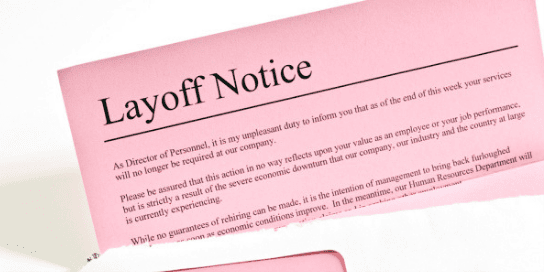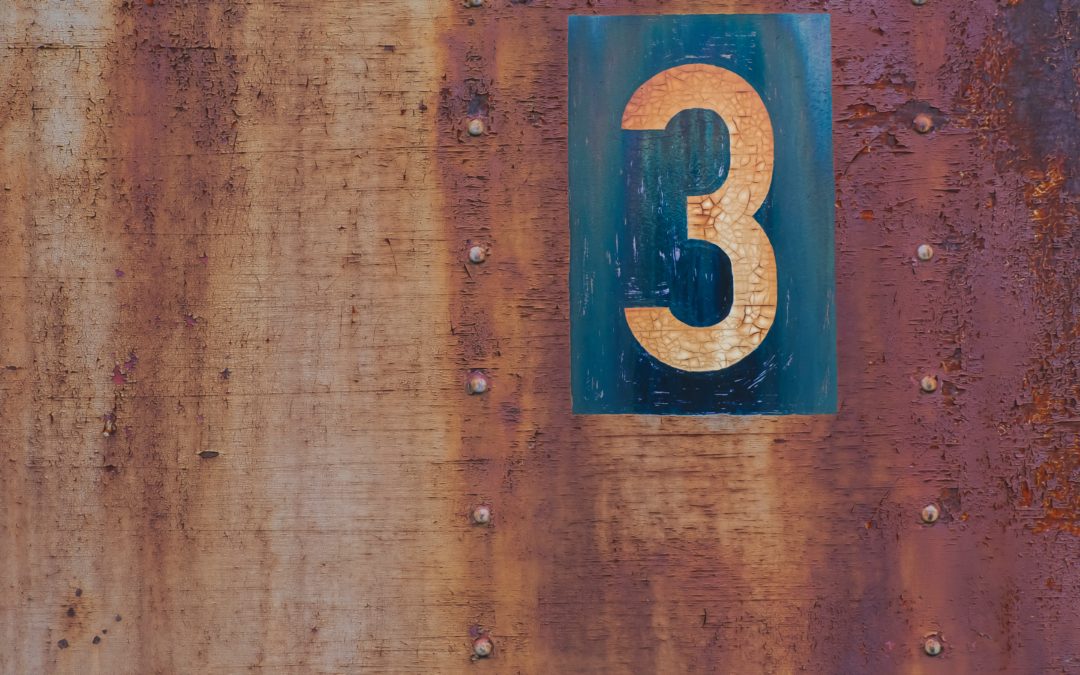On March 12th at 3PM MST, I had the privilege of speaking with Dr. Michelle Arnold, a virologist who earned her PhD from Harvard. In her current role, she works at LSU Health in Shreveport as an Assistant Professor of Microbiology and Immunology. Michelle does not work for the media, or anyone else who may be attempting to profit off of your fear. Here’s an edited transcript from our conversation.
Michelle: My understanding is that China and several other countries developed tests immediately. We were relying on the CDC to develop tests in the United States as opposed to getting shipments of tests from other countries. So, the CDC created some testing kits, which they began to send out several weeks ago. But then, they found that there were some errors. They had to recall those kits and fix that, so that’s why I would say that we’re way behind where we should be on testing.
I think as of yesterday, only about 4,000 tests have been run across the United States. Today, I’m sure it’s more—maybe it has doubled; I don’t actually know the number as of today, because it’s changing rather rapidly. But, there is a delay. The tests should have been provided much more rapidly, and in a much wider fashion.
South Korea is a very nice example, where they are testing essentially everybody in order to determine who has it and who doesn’t. That’s a safe way to go, to sort of isolate infected individuals. We don’t have that capability right now, so we’re sort of relying on the CDC to provide the ultimate diagnosis.
Developing diagnostic kits is a relatively complicated matter; in this case development was controlled by the CDC, but required FDA approval as well. So, I don’t really want to get into all of that beyond giving you the gist of it, because I’m not an expert.
Eric: Okay, so, what’s the best thing to do if somebody’s worried?
Michelle: If somebody is worried, “Oh, my gosh, I’m sick. Do I have it?” The best thing to do is start by evaluating symptoms. Am I sneezing with a runny nose? That’s probably not COVID-19. Do I have a cough emanating from my lower respiratory tract? If yes, do I have a fever along with it? That’s a sign that you may be infected with this virus. But then, you don’t want to necessarily run to the E.R., because in the E.R., you’re going to expose a whole bunch of people as well. So the current recommendation is to contact your primary care provider to describe the symptoms and then follow their instructions.
Eric: If we were to trend closer to Italy, or some of the other countries that have experienced wider testing, how many cases would there be, or what do you feel like the exposure rate would be?
Michelle: I think that’s a difficult question to answer right now. There’s speculation on the narrow end of things, and speculation on the very high end of things. So, you mean, what would be going on right now, as we speak?
Eric: Sure.
Michelle: I would estimate if there’s a thousand confirmed cases right now in the United States, I’m guessing about 10 times more people have been exposed. Because not everybody’s going to get sick.
Eric: Let’s talk about that. So, you can be a carrier, but not exhibit any of the symptoms?
Michelle: Yes. And you can be shedding the virus and not have any symptoms as well.
Eric: What does that mean?
Michelle: That means you could be producing viruses and expelling them in droplets that come out of your mouth or nasal passages. And, you know, a stray sneeze, a little bit of spittle when you’re talking—and so, you can transmit to other people. That’s what shedding would mean, is that you can transmit the virus to other people without knowing that you’re infected.
Eric: Is there anything that’s being reported by the WHO or CDC or government entities that you vehemently disagree with, or feel like is being… I guess, losing texture or nuance? Or something that you have a contrary view on what’s happening currently?
Michelle: No, no, not at all. No. Those are the most reputable sources of information, without a doubt.
Eric: What are some vitamins or minerals or ways to help your immune system? Is there anything?
Michelle: No, unfortunately, no. We are immunologically naïve to this. Everybody is. This is a virus that came, most likely, from bats, and probably passed through an intermediate animal host, and then entered humans. So, our immune systems have not been exposed to this particular virus before.
If you have a young, healthy, normally working immune response already, your body will naturally tend to fight it off, okay? Because there are lots of redundant systems in place for your immune system to fight off novel infections. That’s what happens with babies. They’re naïve to everything, but eventually, they become somewhat immune to it, or totally immune. In this case, it’s very similar, but the concern is that, again, as you age, your immune system naturally starts to weaken. Or, if you have other underlying issues or are immunocompromised, you might have more difficulty fighting it off.
When it comes to zinc supplements and that kind of stuff, I don’t know that any of that is really well verified in the scientific literature. Same with vitamin C. An abundance of vitamin C in your system does not necessarily support your immune system any better than it should already be functioning.
Eric: What are you hearing about the recovery rates, in terms of time, and percentage?
Michelle: Worldometers.info/coronavirus is pretty spot on, using the available data from the CDC and the and the World Health Organization. So, you’ll see that there’s lots of ongoing cases, but also about 69,000 recovered individuals out of what’s listed right now as 134,000 confirmed cases, and we’re approaching 5,000 deaths. I like that you said recovery, right, because it takes a little bit of the fear out of it.
I think people are operating out of fear right now. But on the other hand, I want people to be realistic, too, about their chances of having an adverse outcome. So, you’ll see this sort of generalized number like, “3% of people are going to die.” Right—but it varies widely by age group, and I think that’s really important to understand. If you’re in the 21-to-30 age group, your chances of dying from this are low. They’re not zero, but they’re low. Whereas if you’re over 80, the chances are approaching 15 percent, which is pretty high. So, that’s a risk.
So, in my mom’s age group, which is 70 to 79, it’s approaching a 10 percent risk, so, that’s almost one in 10. That’s a very high risk, a risk that I’m not accepting, you know what I mean? So, I would much rather limit her engagement in public situations, because her risk is so much higher than my risk, which is 0.4 percent or something like that.
It’s a very steep curve with those last two to three age ranges. 69 is like 3.4 percent, which is right at the average rate, but it’s in the 70- and 80-plus age ranges that the risk goes way up. I do think that a lot of organizations are taking the right approach right now, which is canceling large events.
And you had a question about Amazon packages, right?
Eric: Yes, Amazon packages. I thought that might be one of the questions you would laugh at.
Michelle: I’ve heard other people asking that on NPR, so, really, I like that question. I want to tell you that you’re not the only one having that question. I think that the risk is pretty low from Amazon packages.
It’s interesting: there’s already been a lab that has done a study to look at the stability of the virus on different surfaces. On cardboard, it lasted for about 24 hours. So, if somebody were to cough virus onto cardboard, it might survive up to that long. It actually was longer on plastic surfaces; it could be detected up to 72 hours. But those are idealized circumstances in a lab, right? So, probably, it’s much less than that.
But again, what that would take is you taking your package, opening it, and then rubbing your eye or licking your finger to inoculate yourself. So, ultimately, I think that risk is rather low. Again, maybe it’s not zero, but it’s incredibly low.
Eric: Is there any possibility that this might be overblown or…? I don’t want to sound too overly optimistic for America, but like, are we in better health than other countries, like with our pollution and how we take care of ourselves, or does that not matter? Like, is it just basically like those infection rates are gonna be pretty stable no matter what?
Michelle: I might’ve had that argument if this was just coming out of China…I might have thought that. But because it’s spread very rapidly throughout Europe where they have, I think, better health care systems and better life expectancies than us in the United States, I’m going to have to say no, because we have Europe as an example now.
So, yeah, people with preexisting health conditions, asthma and other lung diseases, lung issues, and heart issues are at higher risk of having complications from being infected. And we have a hell of a lot of people with diabetes in this country.
Eric: What do you think is the most overblown fear? And what do you think is the most underrated fear right now, the way you see it? Besides toilet paper.
Michelle: I think people are not… I mean, there’s a lot of talk about washing your hands and not touching your face, and those are absolutely true. And there’s a run on hand sanitizer, right? Which works, but, so does soap and water, and people are very much focused on those aspects because we’ve been hearing them over and over and over.
But those are not the only way that the virus is transmitted. So, being in close proximity to somebody, talking to them within, you know, a few feet of each other, you could potentially be exposed to aerosols, whether you see them or not. Close contact is still a great concern. So, I don’t think people recognize all of the close contact they have with people every day…even myself! I went out to lunch today, and I was like, when do I stop going out to lunch? Because if there’s a whole bunch of people circulating through, and a person serving food gets sick, then they could also transmit it to me. I don’t know, at what point do I change my life to really limit social interaction? That’s a very hard decision.
I mean, I know it in my head, but I just don’t think people are prepared for the level of social isolation that this probably calls for. I said to my mom, you have to think about not going to church. She said, “Not go to church? That’s crazy.” But, you know, there are these things in our lives that we just do. You don’t consider them potential modes of spread. So, I think people are underprepared for how they have to change their interactions with people.
Look at what China did. They told people, go home and don’t come out. Don’t come out of your house, period. That’s an authoritarian government that has the ability to do that. I think they’ve slowed their spread significantly, but they’ve been doing it for going on four weeks now. And I don’t know what happens when they say, okay, you can come back out. Do we see another increase in cases? I don’t know. And I don’t think in the United States we have the capacity to restrict people completely in their homes.
Eric: Are there any other countries that have handled this in a better way?
Michelle: I mean, I think South Korea’s done relatively well by testing a lot of people and by trying to keep things clean. That hasn’t been perfect, but they’ve done pretty well.
Eric: Does this at all look like bioterrorism?
No. If someone wanted to do something like that, we’d have a lot higher infection rate, a lot more issues on our hands. Also, it’s not nearly as easy as people think it is. To engineer changes in a virus like this are very difficult. And we would have to understand a lot more about how the virus interacts with the host.
Eric: So, as far as mutations are concerned, are you at all worried that this could mutate into other strains, where we wouldn’t be able to fight it effectively?
Michelle: RNA viruses, or viruses that have genomes made of RNA, mutate pretty rapidly. This one has probably hit a sweet spot of both transmission and causing pathogenesis. There’s a lot of mutations that could happen. It could transmit even better. Probably won’t, though. It seems like it’s pretty efficient already, but it could mutate and then transmit worse. But that’s unlikely to happen too, because it seems to have hit a really sweet spot. A virus doesn’t want to kill its host, necessarily. It wants to make copies of itself. If you kill your host, you can’t spread anymore. So viruses will tend to try to adapt—the ones that survive will be the ones that keep us alive longer, and so can make the most copies.
But it’s important to know, we’re not able to cure this at all right now. This is just your own immune system fighting this off and saving the day. And it’s the older people with weaker immune systems, or anybody with a weaker immune system, who can’t fight it off quite as well.
Eric: My next thought is around vaccinations and how long it would take to actually get those to scale. Do you feel like by the time someone in a lab figures this out, we’ll pretty much be at the tail end of this? Is it worth pursuing that?
Absolutely. Because we don’t know, right now, if this is a one-off and when everybody gets it, they’ll be immune and that’s it, or if it fades, like the Zika virus just kind of faded and we don’t hear about it anymore, or if it’s going to stick around and be a seasonal thing, and every winter we’re going to have to worry about outbreaks of this. We don’t know. So absolutely, a vaccine is important.
Lots of scientists are working on it. They have some good candidates. But I think, you know, they have to do all the safety testing associated with it before they can move into clinical trials. So, even if we are two or three weeks away from something that can go out, it’s only going out for safety trials first. And that means animal experiments before it moves into humans, and then human safety trials in healthy individuals before it gets delivered to people who might be sick. So, this is a six-month to one-year rollout at a minimum. We may be past the peak of it at that point.
Eric: Wow. OK.
Michelle: So, we’ve had outbreaks of coronaviruses in the past. You know that?
Eric: I did not.
Michelle: Okay. So in 2003, there was SARS coronavirus. Did you know that this is also SARS coronavirus? It’s very related, very similar to the first SARS coronavirus. We managed to maintain that one in a small area, and it never really spread very far. So, that was a good scenario. Good outcome. There was a lot of money at that time that we were going to use to do a bunch of studies that just didn’t materialize, because the outbreak was contained. And it was like, “Oh, it’s just not important anymore. So, sorry, you don’t need that money.”
But had we continued the research at that time, we probably would have had a vaccine candidate ready to roll and test now. That’s the importance, I think, of government-funded research, not just for a product that we need right this second, but for something that we might need down the road.
The other outbreak of a coronavirus was MERS in 2012—that was Middle East Respiratory Syndrome. That was transmitted by camels. That one was also pretty deadly, but also contained in a relatively small area. It didn’t transmit quite as easily.
Eric: This is very sobering.
Michelle: It is sobering, yes. I think there is a sense from a lot of people that I know who aren’t scientists who are like, “This is going to pass in two weeks.” But no, that’s not right. We are at the beginning of this, and it’s going to escalate from here. Some miracle happens if the virus mutates and, you know, becomes less virulent or doesn’t cause as many problems. That would be great. I would celebrate that. But the chances of that are pretty slim.
Eric: Okay.
Michelle: So, don’t hoard stuff, but, you know, be prepared to have to self-isolate for two weeks. You’ve heard the hashtag, “Flatten the Curve,” right?
Eric: Yeah.
Michelle: Exactly. So, the genie is out of the bottle, but if we can prevent it from spiking and overwhelming our medical capabilities, and stretch it out a little bit, it might not end up being nearly as bad. But we don’t want a scenario where it’s like, well, we can’t do anything about it, so just let it happen and whoever lives, lives. Because people are not going to be happy when a loved one in their life succumbs to the infection. It’ll be, “If only we had flattened the curve and had more health care availability.”
Eric: Are you concerned at all that if the peak does not get flattened, that the current medical infrastructure will be significantly overwhelmed?
Michelle: Yes, absolutely. One hundred percent. Here, they like to operate at, you know, close to 90 percent capacity. I think I read we operate at about 75 percent capacity in our hospitals across the country. I thought it was a little higher than that, so that doesn’t give a lot of wiggle room, as far as free beds are concerned.
So, if you look at, you know, the models projecting the number of people who will get seriously ill from this. There’s no way we could accommodate them all with the number of beds that are available on any given day in the United States. And so, the concern is not just about the people who get coronavirus infections, but the people who come in with a heart attack or a stroke or a car accident. Because those are the people who also need hospital care, right? And if we’re treating lots of people for respiratory issues, we don’t have the health care capacity. So that’s why if we do stretch it out, if we do cancel these big events, and not just let it run its course, we’ll give our hospital and healthcare systems the best chance they have of fighting it.
Michelle recommends the following reputable sources for information on the coronavirus outbreak:
Johns Hopkins Coronavirus Resource Center:
https://coronavirus.jhu.edu/map.html
The Centers for Disease Control and Prevention:
https://www.cdc.gov/coronavirus/2019-nCoV/index.html
Harvard Medical School Coronavirus Resource Center:
https://www.health.harvard.edu/diseases-and-conditions/coronavirus-resource-center
Colorado Department of Public Health:
https://www.colorado.gov/pacific/cdphe/2019-novel-coronavirus
And for reputable Twitter feeds, try following these folks:
@VirusesImmunity (Prof. Akiko Iwasaki)
https://twitter.com/VirusesImmunity?ref_src=twsrc%5Egoogle%7Ctwcamp%5Eserp%7Ctwgr%5Eauthor
@VirusWhisperer (Prof. Benhur Lee)
https://twitter.com/VirusWhisperer?ref_src=twsrc%5Egoogle%7Ctwcamp%5Eserp%7Ctwgr%5Eauthor
@JHSPH_CHS (Johns Hopkins Center for Health Security)
https://twitter.com/JHSPH_CHS?ref_src=twsrc%5Egoogle%7Ctwcamp%5Eserp%7Ctwgr%5Eauthor
@mlipsitch (Marc Lipsitch)
https://twitter.com/mlipsitch?ref_src=twsrc%5Egoogle%7Ctwcamp%5Eserp%7Ctwgr%5Eauthor






